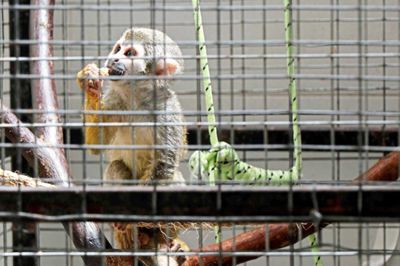Wildlife still in danger
PETALING JAYA: Despite the lockdown and disruptions caused by the Covid-19 pandemic, trafficking and illicit trade of protected wildlife species continue to pose a significant threat to biodiversity worldwide.
According to the United Nations Office on Drugs and Crime’s (UNODC) third edition of the World Wildlife Crime Report 2024, the pandemic had a mixed impact on wildlife trafficking.
The report, released yesterday, said that while there was a notable reduction in trafficking from personal baggage in air transport due to travel restrictions and seizures, information suggested that the overall trafficking levels did not see a significant decline.
ALSO READ: UN report warns of broader environmental consequences of wildlife trafficking
It found action against illegal wildlife trade increased from 2017 onwards, hitting its peak during the pandemic period between 2020 and 2021.
The findings, including data from the Convention on International Trade in Endangered Species of Wild Fauna and Flora Annual Illegal Trade Reports, revealed a staggering 140,000 wildlife seizure incidents involving some 4,000 plant and animal species between 2015 and 2021.
The estimated seizures involved 13 million items weighing over 16,000 tonnes during the seven-year period.
The illegal items were meant for a wide range of sectors including food, medicine, live animal and plant keeping, and as “luxury” goods.
Despite the significant number of seizures, the UNODC said these figures likely represented only a fraction of actual wildlife trafficking activities with the true scale of the illegal trade being far larger.
It said the pandemic also caused disruptions to enforcement actions and shifts in trafficking methods which potentially could have led to under reporting.
“While the Covid-19 pandemic has reshaped some aspects of wildlife trafficking, the underlying challenges remain,” the UNODC said.
The report said enforcement efforts had increased globally over the past two decades with many countries forming specialised units, multi-agency teams and national strategies to combat wildlife crime.
But assessing the impact of enforcement measures remains challenging.
However, findings showed that the clamping down on trafficking of high-profile commodities such as elephant ivory and rhinoceros horn had shown progress over the past decade, with poaching, seizure levels and market prices sharply declining, although occasional large seizures of both commodities continue to occur.
The UNODC also emphasised the need for consistent vigilance and collaboration at national, regional and international levels to address wildlife trafficking effectively.
“Addressing wildlife trafficking requires a comprehensive and coordinated approach which include strengthening enforcement, recognising underlying socio-economic drivers and enhancing international cooperation to combat corruption and illicit financial flows,” UNODC said.
In Malaysia, a steep decrease of over 60% in wildlife poaching and trafficking was recorded during the pandemic mainly due to the movement control order (MCO) in 2020 and 2021, according to the Wildlife and National Parks Department (Perhilitan).
It said apart from the MCO, the National Task Force was formed, comprising 19 enforcement agencies to counter wildlife crimes under an operation codenamed Ops Bersepadu Khazanah.
It made a significant impact when more than 350 people were detained and RM36mil worth of protected and endangered animals, their body parts and flora were seized.













Leave a Reply